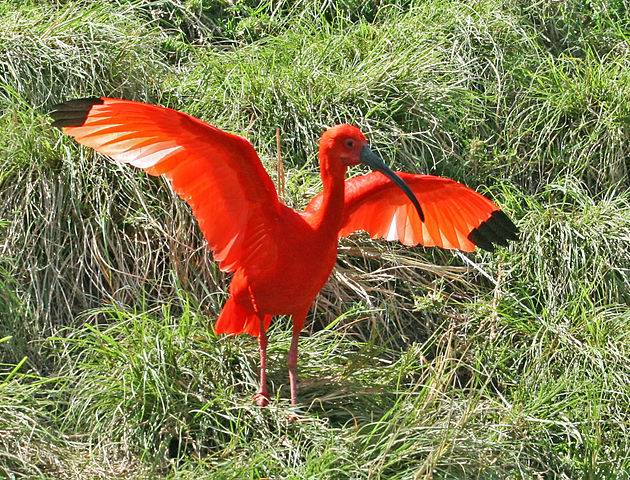

A remarkably stunning bird that has been described anywhere from a beautiful orange-red to a brilliant scarlet. Whatever color you decide best describes this bird, you have to agree it makes it unmistakable.
Meet the Scarlet Ibis

The scarlet ibis (Eudocimus ruber), is a species of ibis in the Threskiornithidae bird family. Adults of both sexes are practically all scarlet in their plumage. Feathers may show various shades, but it is really only the wingtips that deviate from this color, being a really deep inky black.
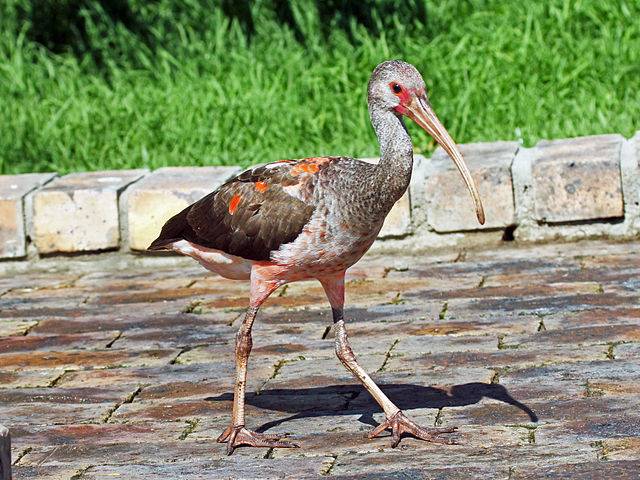
Males and females are very similar in color, differing only in size, with the males being larger with a beak being 22% longer than the females.
Juveniles are a mix of white, grey, and brown colors, gaining their scarlet color from a diet of red crustaceans.
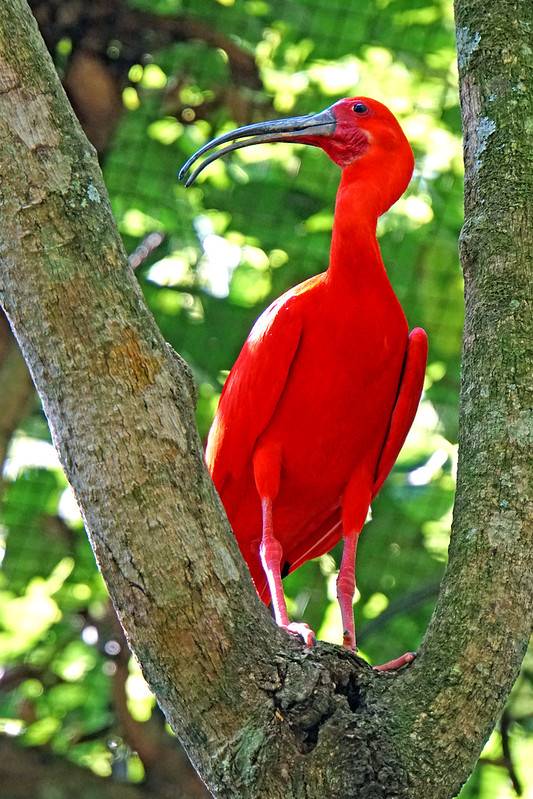
A migratory bird, sometimes a vagrant bird, the Scarlet Ibis has a vast range from South America to the Caribbean islands. Flocks are found in Brazil, Colombia, French Guyana, Suriname, and Venezuela. They can also be found in the Netherlands Antilles and Trinidad and Tobago.
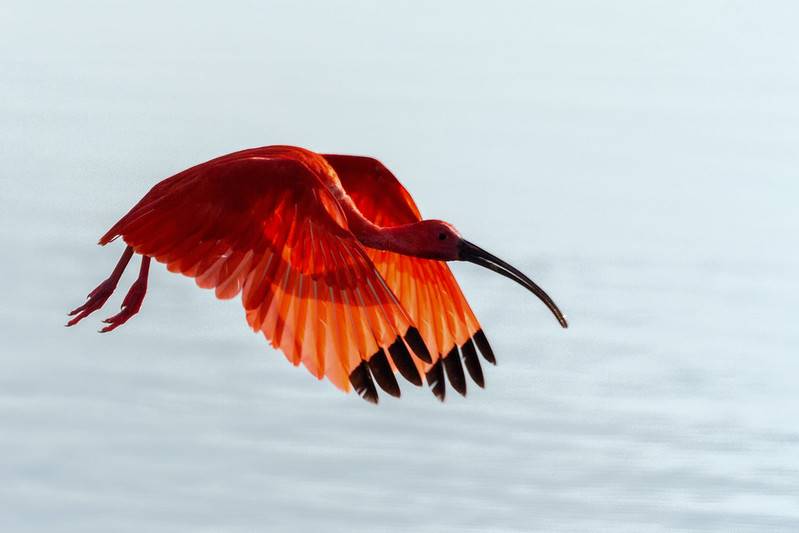
Flocks of Scarlet Ibis gather in wetlands and other marshy areas, including shorelines and rainforest areas. There they eat mainly insects, in particular scarab beetles which form the major part of their diet. Though they do eat crustaceans such as shrimps, also crabs, and mollusks.
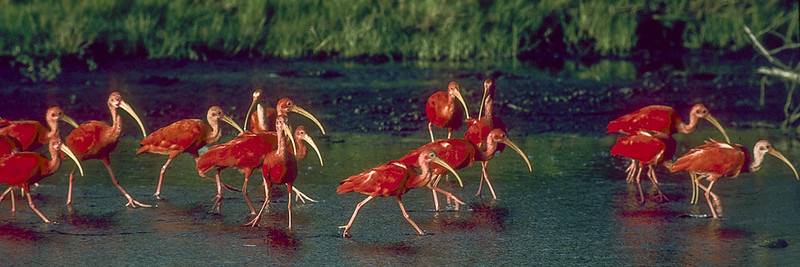
Breeding adults have black bills, mating pairs build nests made from loose platforms of sticks, mostly built in trees well above the waterline. Where possible they are built on islands away from the danger of predation. The female lays a clutch of three to five eggs which she incubates for 19-23 days. Pairs remain together, sharing parental responsibilities while raising their young.
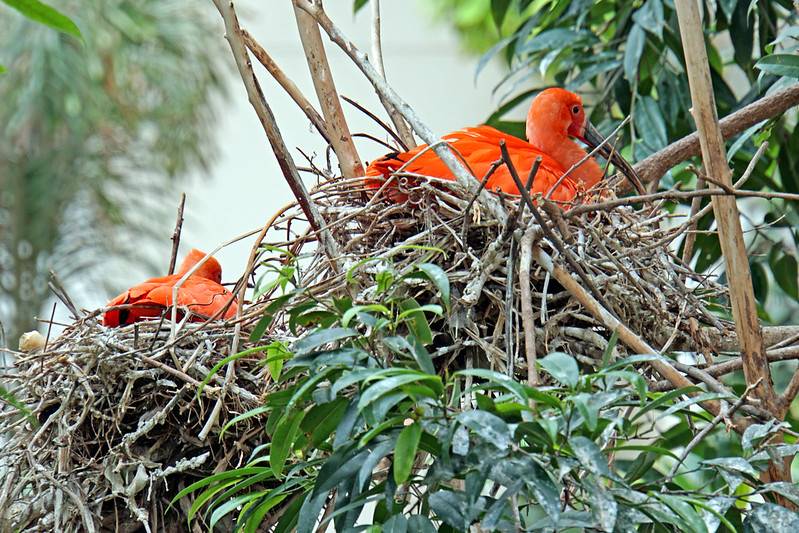
This species has protected status throughout the world. This has helped the bird gain the status as of least concern on the IUCN Red List.
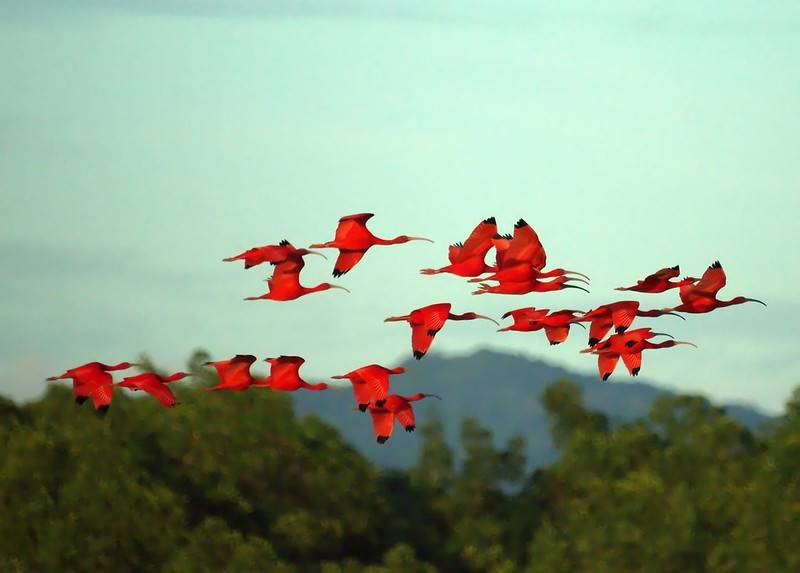
The Scarlet Ibis is one of the national birds of Trinidad and Tobago
